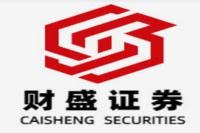The Electric Avenue: Navigating the Charging Station IPO Rush & The Future of EV Charging
Meta Description: Explore the booming EV charging station market, the challenges faced by companies like Xingxing Charging and Zhidatech seeking IPOs, and the innovative business models emerging to ensure profitability and sustainable growth in this dynamic sector. Keywords: Charging Station, IPO, New Energy Vehicle, Electric Vehicle, Charging Pile, Renewable Energy, Investment, Profitability, Business Model.
Whoa, Nelly! The electric vehicle revolution is in full swing, and with it comes a tidal wave of change in the charging station industry. Imagine a world where every corner boasts a convenient, reliable charging point for your electric car – that's the vision driving the current frenzy of Initial Public Offerings (IPOs) in this exciting sector. Companies like Xingxing Charging (a subsidiary of Wanbang Digital Energy), Zhidatech, and even the giant, Tella, are vying for a piece of the capital market pie, each hoping to electrify investor wallets as much as they're electrifying our vehicles. But this isn't a simple plug-and-play situation. The journey to IPO is fraught with challenges, requiring not just technological prowess but also a robust, profitable business model capable of withstanding the scrutiny of seasoned investors. This isn't just about building charging stations; it's about building a sustainable, scalable, and profitable future for the entire electric vehicle ecosystem. This article delves into the heart of this electrifying landscape, exploring the complexities of the charging station IPO rush, dissecting the diverse business models emerging, and predicting the future of this rapidly evolving industry. We’ll uncover the secrets behind successful strategies, reveal the hurdles companies face, and shed light on the innovations paving the way for a brighter, more charged-up future. Prepare for a deep dive into the nitty-gritty of the EV charging revolution, where innovation meets investment, and the road to profitability is paved with smart strategies and technological advancements. Let's get started!
Charging Pile Rush: The IPO Frenzy
The charging station industry, a critical component of the burgeoning electric vehicle (EV) ecosystem, is experiencing a surge in interest from capital markets. Driven by government incentives, supportive policies, and the ever-increasing demand for EVs, numerous charging infrastructure companies are making a beeline for the IPO (Initial Public Offering) route. This rush reflects the immense potential investors see in the sector, but it also highlights the significant challenges these companies face in proving their long-term viability.
The recent flurry of IPO attempts, notably by Xingxing Charging and Zhidatech, underscores the industry's ambition. Xingxing Charging, a major player with a substantial market share, has initiated the IPO process, indicating a strong belief in its future prospects. Similarly, Zhidatech, a leading provider of home charging solutions, has also filed for an IPO, demonstrating the appeal of this niche within the broader charging infrastructure market.
However, the path to a successful IPO isn't paved with roses. The capital market's demands are growing more stringent, reflecting a heightened awareness of the industry's inherent challenges. Heavy upfront investment, lengthy return on investment (ROI) periods, and relatively low utilization rates are all key factors influencing investor apprehension. Simply put, investors want to see a clear path to profitability before committing their funds.
The Charging Station Landscape: A Diverse Ecosystem
The charging station market isn't a monolithic entity. Instead, it's a dynamic ecosystem characterized by various business models and strategies. We can broadly categorize these players:
- Asset-Heavy Operators: Companies like Tella and Xingxing Charging own and operate a significant portion of their charging infrastructure. This model requires substantial upfront investment but offers greater control and potential for long-term returns. However, it also carries significant financial risks, especially considering the relatively long payback period for charging stations, which varies widely depending on location and usage. Prime locations like those near taxi stands or bus depots see much higher returns than more sparsely used stations.
- Third-Party Aggregators: These companies, such as Nenglian Zhidian (NAAS.US), act as intermediaries, connecting EV drivers with a network of charging stations owned by others. This "light asset" model minimizes upfront capital expenditure, allowing for rapid scaling and expansion. Their revenue is typically generated through commissions on each charging transaction.
- OEM-Integrated Solutions: Several original equipment manufacturers (OEMs) of EVs are also investing in their own charging infrastructure, either directly or through partnerships. This approach offers a strategic advantage by aligning charging solutions with their vehicle sales.
- Crowdfunding and Community-Based Models: Emerging models leverage crowdfunding or community participation to finance and operate charging stations, often focusing on specific geographic areas or niche markets.
These diverse models coexist, each with its own advantages and drawbacks. The asset-heavy model provides greater control but demands substantial capital investment, while the light-asset model offers agility but depends heavily on partnerships. The optimal strategy often depends on factors such as market conditions, access to capital, and technological capabilities. Each model demands a different level of financial acumen and entrepreneurial skill.
Navigating the Challenges: Profitability and Sustainability
While the potential for growth in the charging station industry is undeniable, companies face multiple hurdles on their path to profitability and long-term sustainability:
- High Capital Expenditure: Building and maintaining a network of charging stations requires substantial capital investment. This is particularly true for fast-charging stations, which utilize more advanced and costly technology.
- Long Return on Investment (ROI) Periods: The ROI for charging stations can be lengthy, often stretching several years, depending on factors like location, utilization rates, and pricing strategies.
- Low Utilization Rates: Many charging stations experience periods of low utilization, especially during off-peak hours, impacting their overall profitability.
- Technological Advancements: The rapid pace of technological advancement in the charging industry necessitates continuous investment in upgrading equipment and software.
- Competition: The market is becoming increasingly competitive, with numerous players vying for market share, putting pressure on pricing and profitability.
New Energy Vehicle (NEV) Charging: The Future is Now
The explosive growth of NEVs is the main driver behind the charging station boom. This isn't just a trend; it's a fundamental shift in the automotive landscape. Governments worldwide are actively promoting EV adoption through various incentives and regulations, creating a favorable environment for charging infrastructure development. However, navigating this growth requires innovative strategies and a deep understanding of the market dynamics.
The Chinese market, in particular, presents a unique set of challenges and opportunities. Unlike many Western markets where private charging at home is prevalent, public charging stations play a much more significant role in China. This is due to limited private parking spaces, varying electricity infrastructure across residential areas, and the higher costs associated with installing home charging solutions. This high reliance on public charging creates a huge opportunity for companies that can efficiently manage and expand their networks.
Innovative Business Models: Beyond Charging
Smart companies are moving beyond the traditional "charging-only" model to explore diversified revenue streams. This includes:
- Value-Added Services: Offering ancillary services such as convenience stores, car washes, or maintenance facilities at charging stations can significantly enhance profitability.
- Advertising and Branding: Charging stations can also serve as advertising platforms, generating revenue through targeted advertising campaigns.
- Data Analytics and Optimization: Using data analytics to optimize charging station placement, pricing, and operations can improve efficiency and profitability.
- Dynamic Pricing: Adjusting pricing based on demand and real-time availability can help maximize revenue and optimize resource utilization.
Frequently Asked Questions (FAQs)
Q1: What is the biggest challenge faced by charging station companies seeking IPOs?
A1: The biggest challenge is demonstrating consistent profitability and a sustainable business model to skeptical investors. The high upfront capital investment and relatively long ROI periods make it difficult for some companies to meet the stringent requirements of the capital market.
Q2: What are the key factors driving the growth of the charging station industry?
A2: The primary drivers are the rapid increase in NEV sales, supportive government policies, and the increasing awareness of environmental sustainability.
Q3: What are some innovative business models emerging in the charging station industry?
A3: Innovative models include value-added services, advertising, dynamic pricing, and data-driven optimization strategies.
Q4: What is the difference between asset-heavy and light-asset models in the charging station industry?
A4: Asset-heavy models involve owning and operating the charging infrastructure, while light-asset models focus on aggregating charging stations owned by others.
Q5: How are charging station companies addressing the issue of low utilization rates?
A5: Companies are using data analytics to optimize station placement and pricing strategies, as well as offering value-added services to attract more customers.
Q6: What is the future outlook for the charging station industry?
A6: The future outlook is extremely positive, driven by the continued growth of NEVs and the increasing demand for convenient and reliable charging infrastructure. However, continued innovation in business models and technology will be crucial for long-term success.
Conclusion: Charging Up the Future
The charging station industry is poised for explosive growth, but success will require more than just building charging piles; it will demand strategic vision, technological innovation, and a keen understanding of market dynamics. Companies that can successfully navigate the challenges of high capital expenditure, long ROI periods, and intense competition while embracing innovative business models will be best positioned to capitalize on the immense opportunities presented by the electric vehicle revolution. The race to the IPO finish line is far from over, but the companies that can demonstrate sustainable profitability and a clear path to long-term growth will be the true winners in this electrifying race. The road ahead is long, but the future is electric, and it's charging ahead at full speed!



